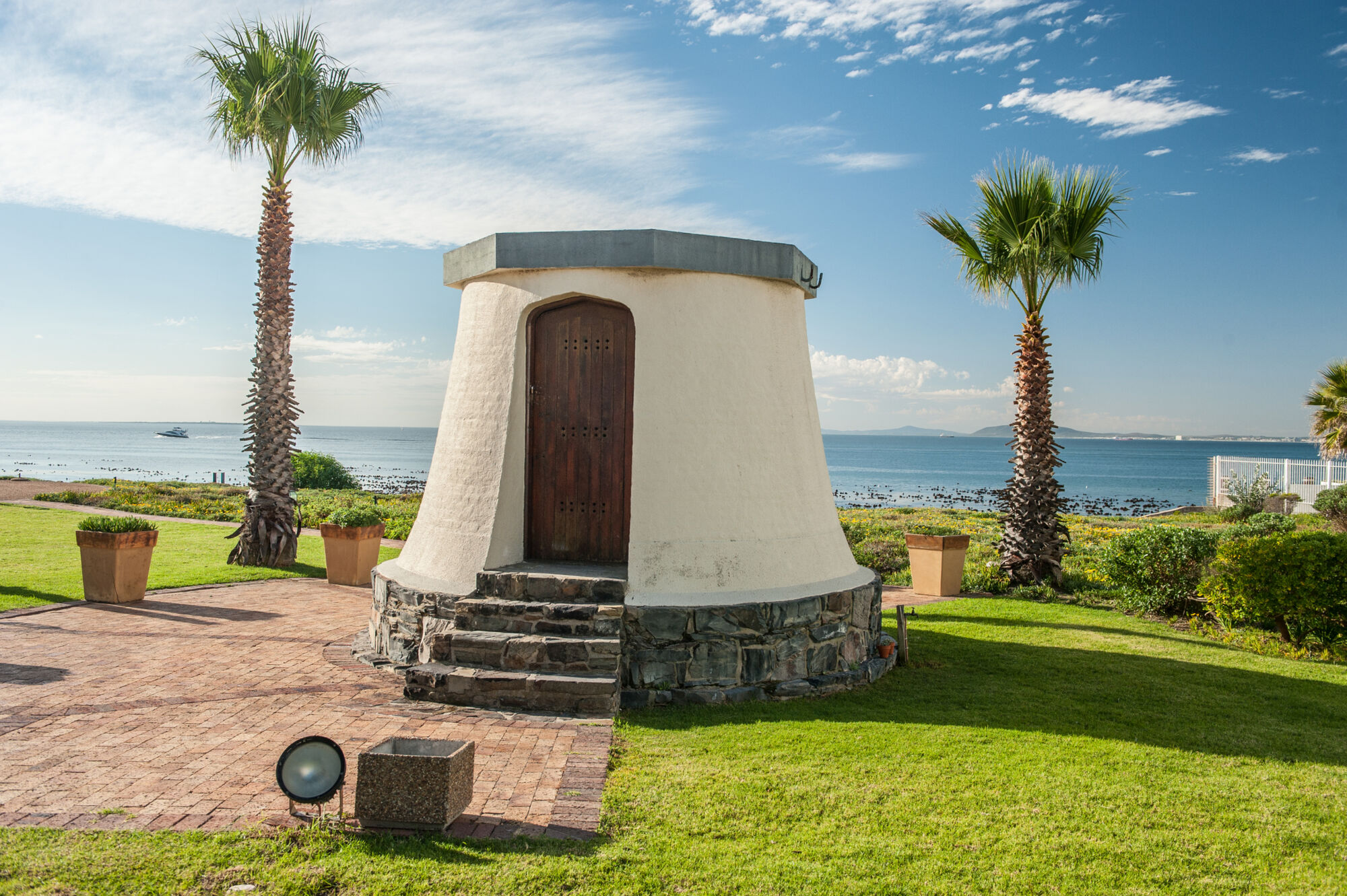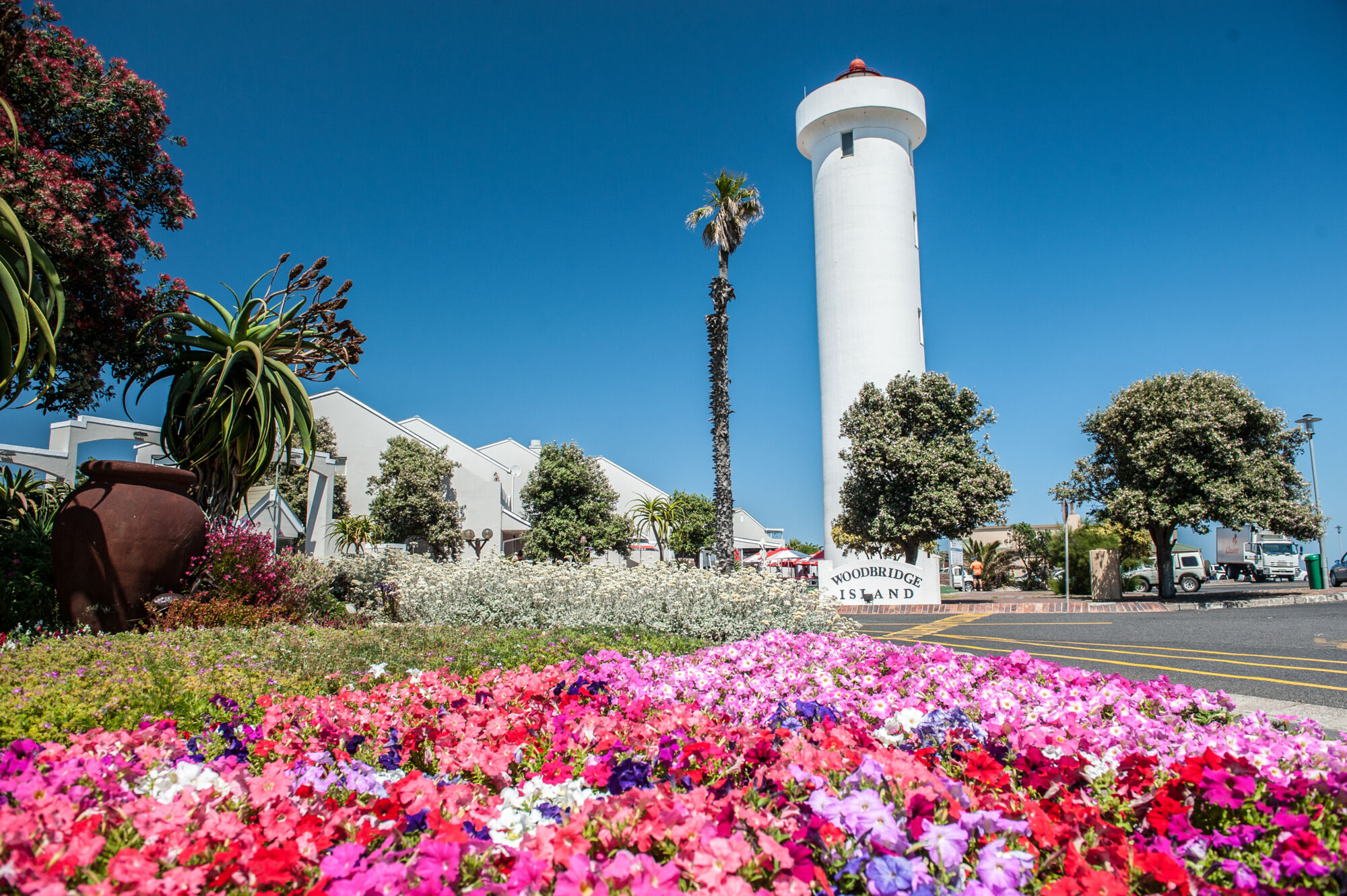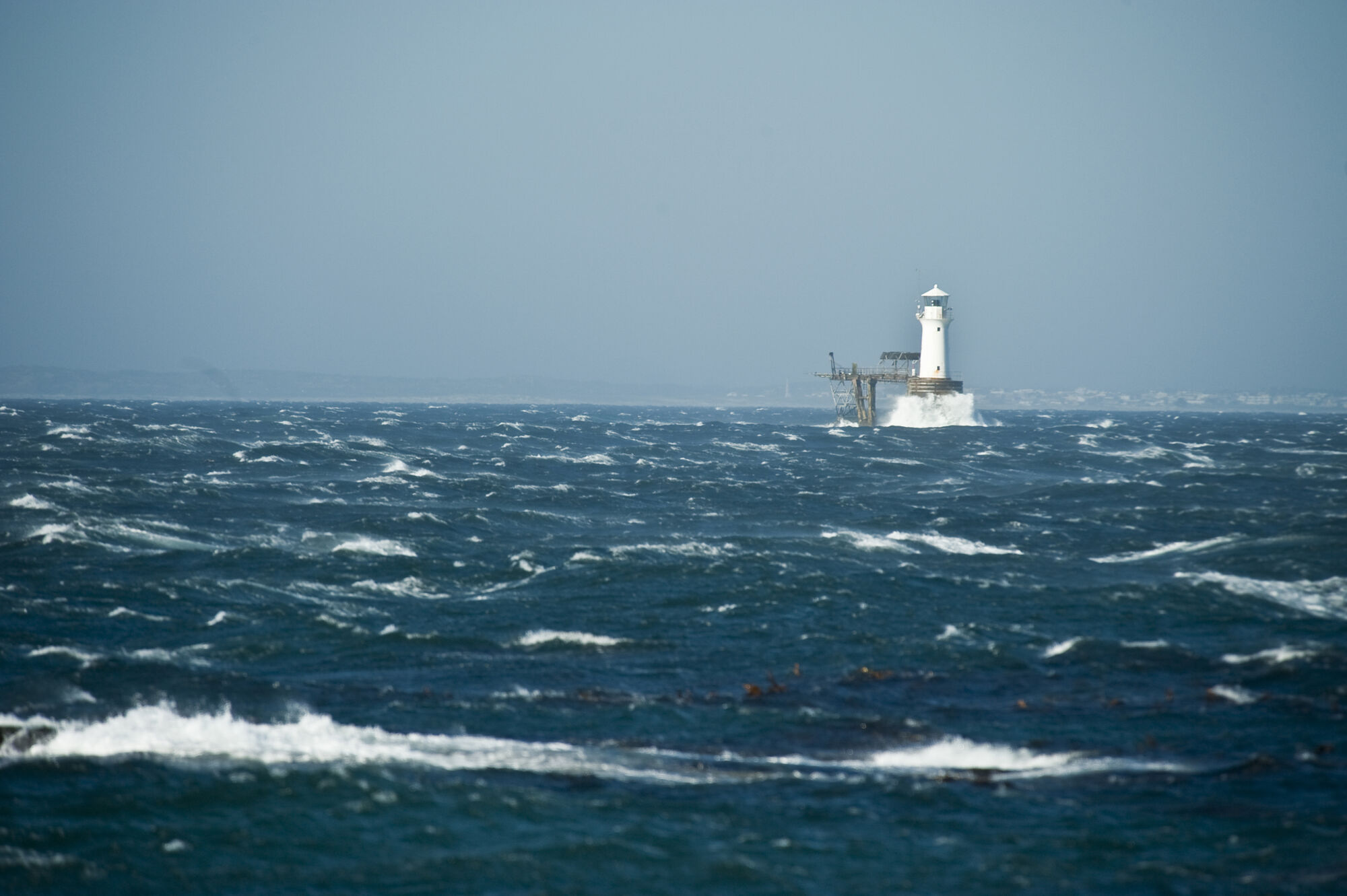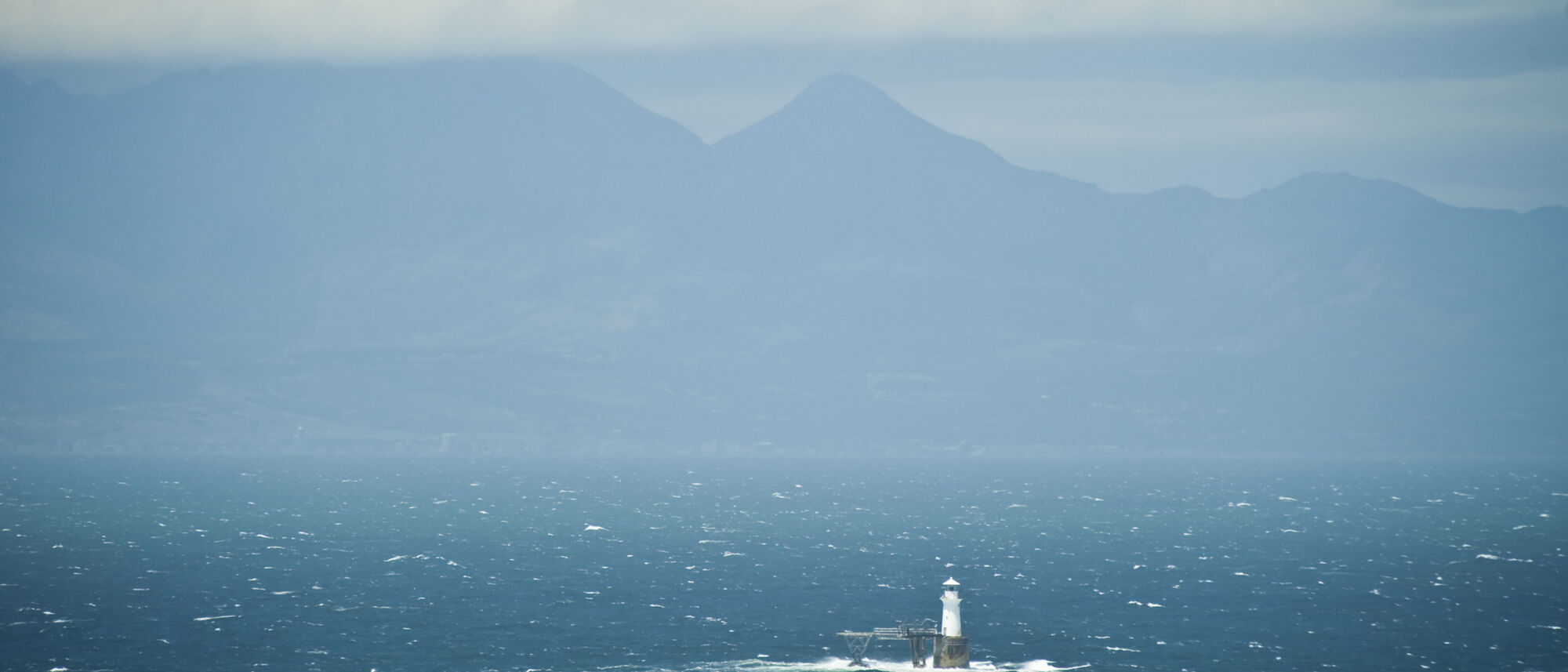Robben Island Lighthouse
Robben Island and nearby Whale Rock have been the nemeses of many ships and their crews over the centuries. Atlantic surf thunders continuously around their flanks and any vessel wrecked on the offshore reefs is soon beaten to pieces and disappears. In the 1650s, Jan van Riebeeck set a navigation aid atop Fire Hill (now Minto Hill), the highest point on the island. Huge bonfires were lit at night to warn ships off the rocks. The current lighthouse, a white masonry tower with a red ‘hat’ in the centre of the island, was installed on Minto Hill in 1865 and has a range of 24 nautical miles.
Visit the lighthouse during a Robben Island tour, daily from the V&A Waterfront.
Mouille Point Lighthouse
Completed in 1842, South Africa’s second lighthouse operated until 1908. All that remains is its four-metre high, brick-and-slate base, situated in the grounds of the Hotel School, Granger Bay. In its day, this was an elegant, 11-metre tower painted red and white and topped by an octagonal lantern imported from Paris. A four-metre hollow foundation in the bedrock provided for oil storage (its lamp used about 730 gallons of sheep-tail oil per year).
Mouille Point Lighthouse failed to meet stringent maritime requirements and ships’ captains complained that it was easily confused with shore lights. Indeed, during its lifetime a number of vessels ran aground on the rocks below.
You can find it in the parking lot of the Hotel School of the Cape Peninsula University of Technology, 3 Beach Road, Mouille Point.

Green Point Lighthouse
The rocky western entrance to Table Bay has always been treacherous for shipping, especially in thick fog. Increased maritime traffic after the Napoleonic Wars meant that many more ships were being put in danger here. This beautiful square structure with diagonal red-and-white stripes is the grande dame of local lighthouses. Commissioned in 1824, it’s the oldest operational lighthouse in the country and was originally lit using sperm-whale oil. The building was later expanded and the light modernised, extending her beam to a range 22 nautical miles. Today, Green Point is considered the home of the South African Lighthouse Keeping Service.
Enjoy it from all angles on a morning or evening walk along the Mouille Point Promenade.
Milnerton Lighthouse
Commissioned in 1960, Milnerton Lighthouse stands on a suburban island surrounded by a lagoon, golf course and residential homes. It’s an austere, 21-metre cylindrical tower of white concrete and serves both as a navigational aid and to warn seafarers away from the eastern shore of Table Bay, the graveyard of so many ships. The wreck of the Nieuw Haarlem is commemorated by a plaque at the lighthouse. It has revolving electric optics with a range of 25 nautical miles.

Slangkop Lighthouse
Commissioned in 1919, Slangkop is the tallest lighthouse on the South African coastline. It’s a graceful structure set above the rocks on the Kommetjie shore and comprises a 33-metre, circular tower painted white with various administrative and diesel-generator buildings around its base. The lantern houses a revolving electric light with a character of four flashes every 30 seconds and a range of 33 nautical miles.
Visit the building beside the tower, where there’s a small museum to lighthouses. Then ascend the spiralling staircase that narrows until you reach the beautiful lantern. If it’s not too windy, step out onto the balcony for breathtaking views of Kommetjie.
Open weekdays 10h00–12h30 and 1300–15h00, tel 021-783-1717.
Roman Rock Lighthouse
Roman Rock was, for centuries, a hazard to ships entering Simon’s Bay. The construction of a lighthouse here was particularly tricky. It’s the only lighthouse in South Africa built on a site that’s awash at high tide. The structure is made of cast-iron segments bolted together with the lowest ring secured to the rock. Completed in 1861, it was manned by two keepers who were relieved every seven days. When the sea was rough, keepers were confined to the tower for days at a time. It was a boring job for which they earned the highest salary in the lighthouse service. In 1914, the light’s mechanism was automated and the tower no longer needed to be manned.
View the lighthouse from anywhere along the western shores of False Bay or on a kayak tour from Simon’s Town.

Cape Point Lighthouse
The first lighthouse at the southwesternmost tip of Africa was built in 1860 (today it’s used as a control tower), but was situated too high and often shrouded in cloud. That’s why a second, masonry lighthouse closer to the waterline was constructed in 1919. This is South Africa’s strongest lamp with a range of 34 nautical miles. The telemetry base station monitoring remote lighthouses around the South African coast most from Green Point to Cape Point in 1990.
When visiting Cape Point, make sure you climb down the ladders from the upper lighthouse to the lovely, dressed-stone lighthouse lower down the cliff. Waves thunder against the rocks just below you and, if you’re lucky, you’ll spot dolphins and whales from here.


















